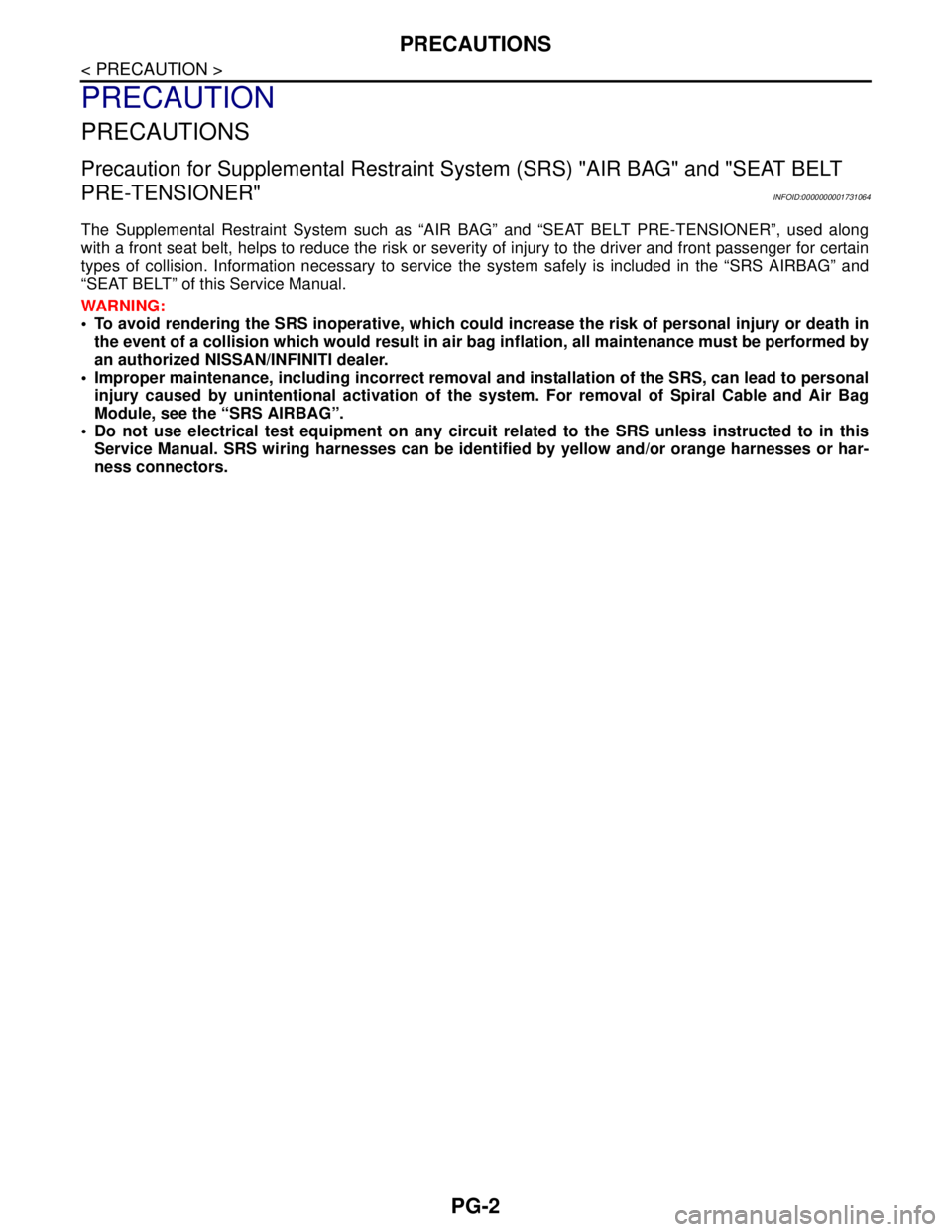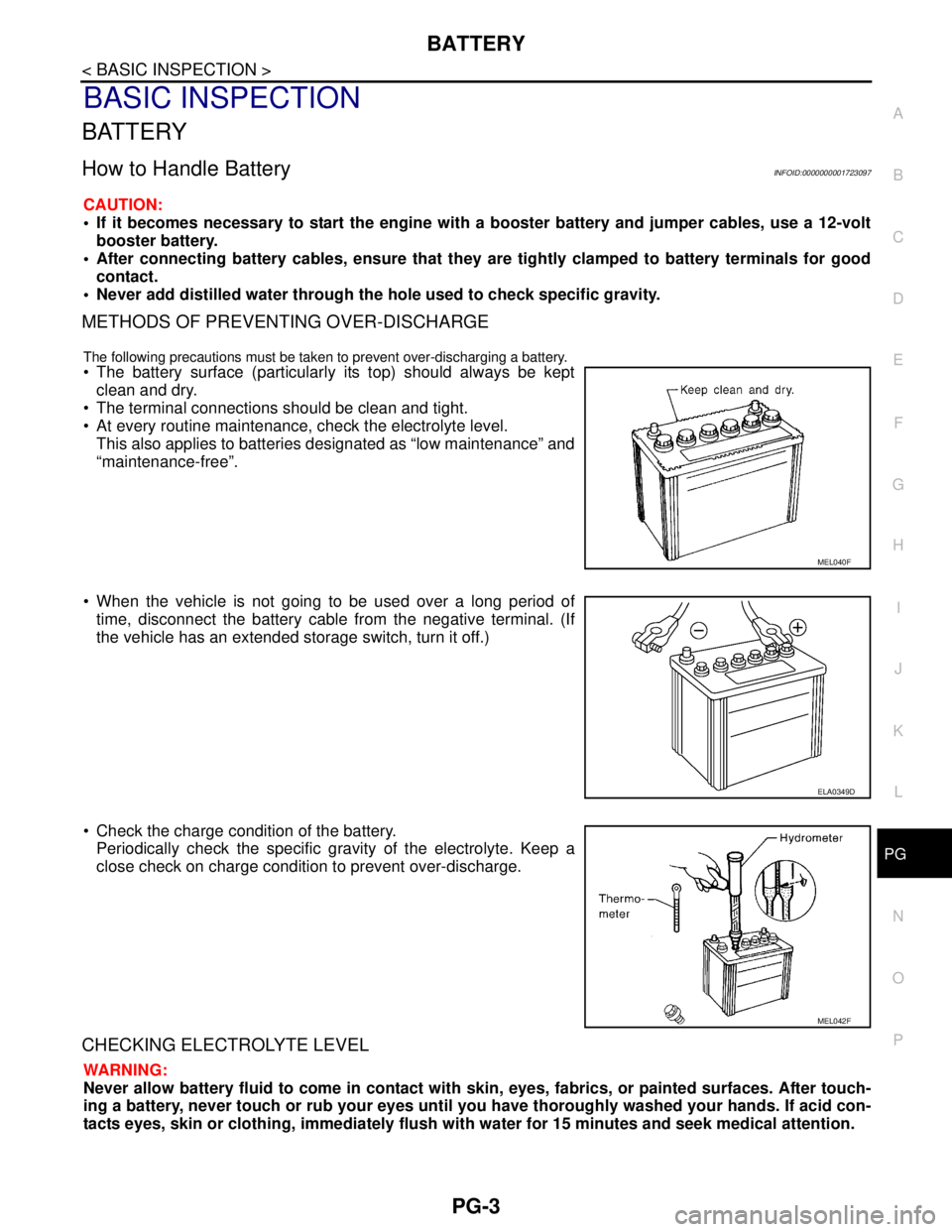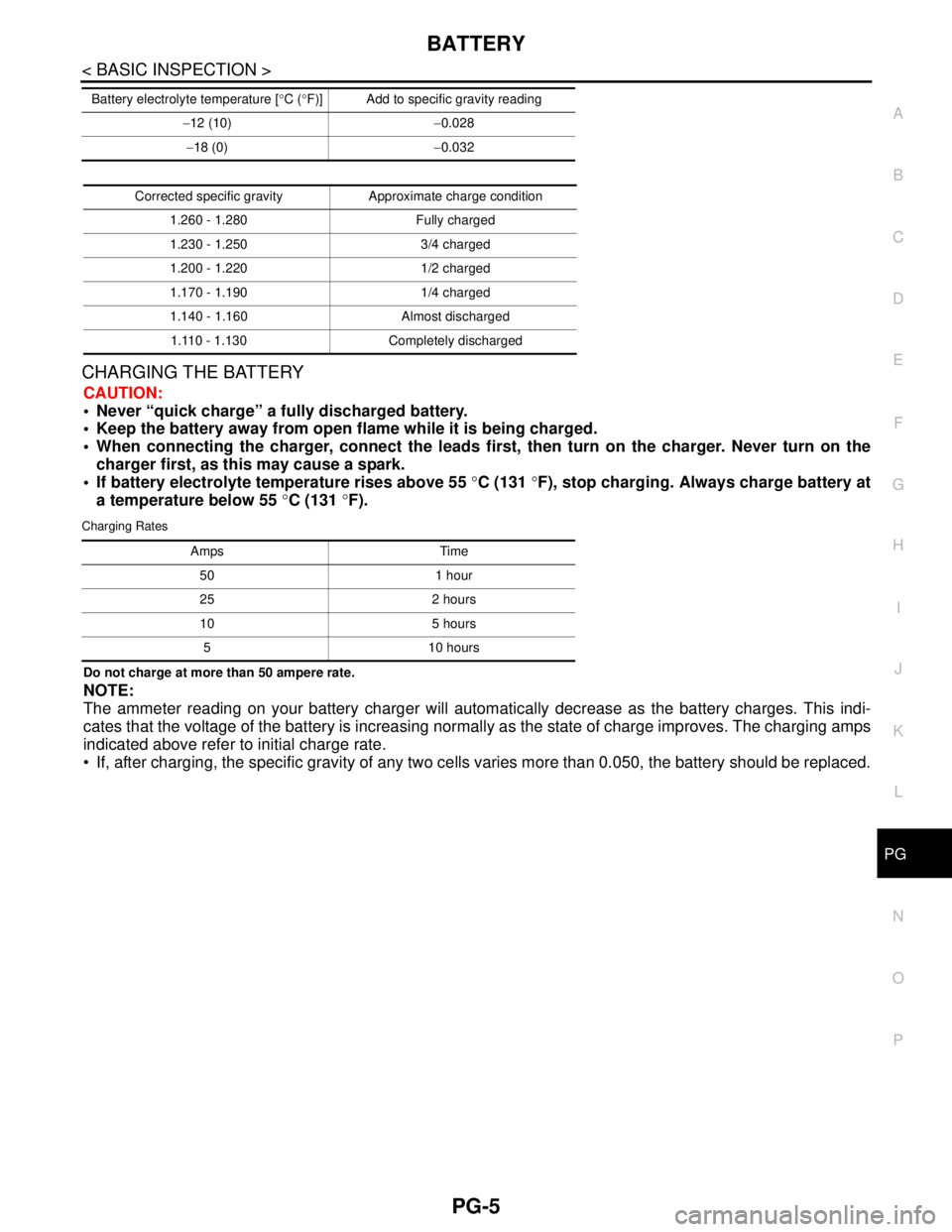NISSAN TIIDA 2007 Service Repair Manual
Manufacturer: NISSAN, Model Year: 2007, Model line: TIIDA, Model: NISSAN TIIDA 2007Pages: 5883, PDF Size: 78.95 MB
Page 4451 of 5883
![NISSAN TIIDA 2007 Service Repair Manual PCS
POWER SUPPLY AND GROUND CIRCUIT
PCS-37
< COMPONENT DIAGNOSIS >[POWER DISTRIBUTION SYSTEM]
C
D
E
F
G
H
I
J
K
L B A
O
P N
POWER SUPPLY AND GROUND CIRCUIT
BCM
BCM : Diagnosis ProcedureINFOID:00000000 NISSAN TIIDA 2007 Service Repair Manual PCS
POWER SUPPLY AND GROUND CIRCUIT
PCS-37
< COMPONENT DIAGNOSIS >[POWER DISTRIBUTION SYSTEM]
C
D
E
F
G
H
I
J
K
L B A
O
P N
POWER SUPPLY AND GROUND CIRCUIT
BCM
BCM : Diagnosis ProcedureINFOID:00000000](/img/5/57395/w960_57395-4450.png)
PCS
POWER SUPPLY AND GROUND CIRCUIT
PCS-37
< COMPONENT DIAGNOSIS >[POWER DISTRIBUTION SYSTEM]
C
D
E
F
G
H
I
J
K
L B A
O
P N
POWER SUPPLY AND GROUND CIRCUIT
BCM
BCM : Diagnosis ProcedureINFOID:0000000001697613
Refer to BCS-30, "Diagnosis Procedure".
BCM : Special Repair RequirementINFOID:0000000001697614
1.REQUIRED WORK WHEN REPLACING BCM
Initialize control unit. Refer to CONSULT-III Operation Manual.
>> Work end.
IPDM E/R (INTELLIGENT POWER DISTRIBUTION MODULE ENGINE ROOM)
IPDM E/R (INTELLIGENT POWER DISTRIBUTION MODULE ENGINE ROOM) : Di-
agnosis Procedure
INFOID:0000000001697615
Refer to PCS-16, "Diagnosis Procedure".
Page 4452 of 5883
![NISSAN TIIDA 2007 Service Repair Manual PCS-38
< ECU DIAGNOSIS >[POWER DISTRIBUTION SYSTEM]
BCM (BODY CONTROL MODULE)
ECU DIAGNOSIS
BCM (BODY CONTROL MODULE)
Reference ValueINFOID:0000000001697616
Refer to BCS-35, "Reference Value".
Termina NISSAN TIIDA 2007 Service Repair Manual PCS-38
< ECU DIAGNOSIS >[POWER DISTRIBUTION SYSTEM]
BCM (BODY CONTROL MODULE)
ECU DIAGNOSIS
BCM (BODY CONTROL MODULE)
Reference ValueINFOID:0000000001697616
Refer to BCS-35, "Reference Value".
Termina](/img/5/57395/w960_57395-4451.png)
PCS-38
< ECU DIAGNOSIS >[POWER DISTRIBUTION SYSTEM]
BCM (BODY CONTROL MODULE)
ECU DIAGNOSIS
BCM (BODY CONTROL MODULE)
Reference ValueINFOID:0000000001697616
Refer to BCS-35, "Reference Value".
Terminal LayoutINFOID:0000000001697617
Refer to BCS-38, "Terminal Layout".
Physical ValuesINFOID:0000000001697618
Refer to BCS-39, "Physical Values".
Wiring DiagramINFOID:0000000001697619
Refer to BCS-50, "Wiring Diagram".
DTC Inspection Priority ChartINFOID:0000000001697620
Refer to BCS-53, "DTCInspectionPriorityChart".
DTC IndexINFOID:0000000001697621
Refer to BCS-54, "DTCIndex".
Page 4453 of 5883
![NISSAN TIIDA 2007 Service Repair Manual PCS
IPDM E/R (INTELLIGENT POWER DISTRIBUTION MODULE ENGINE ROOM)
PCS-39
< ECU DIAGNOSIS >[POWER DISTRIBUTION SYSTEM]
C
D
E
F
G
H
I
J
K
L B A
O
P N
IPDM E/R (INTELLIGENT POWER DISTRIBUTION MODULE ENGIN NISSAN TIIDA 2007 Service Repair Manual PCS
IPDM E/R (INTELLIGENT POWER DISTRIBUTION MODULE ENGINE ROOM)
PCS-39
< ECU DIAGNOSIS >[POWER DISTRIBUTION SYSTEM]
C
D
E
F
G
H
I
J
K
L B A
O
P N
IPDM E/R (INTELLIGENT POWER DISTRIBUTION MODULE ENGIN](/img/5/57395/w960_57395-4452.png)
PCS
IPDM E/R (INTELLIGENT POWER DISTRIBUTION MODULE ENGINE ROOM)
PCS-39
< ECU DIAGNOSIS >[POWER DISTRIBUTION SYSTEM]
C
D
E
F
G
H
I
J
K
L B A
O
P N
IPDM E/R (INTELLIGENT POWER DISTRIBUTION MODULE ENGINE
ROOM)
Reference ValueINFOID:0000000001697622
Refer to PCS-17, "Reference Value".
Terminal LayoutINFOID:0000000001697623
Refer to PCS-19, "Terminal Layout".
Physical ValuesINFOID:0000000001697624
Refer to PCS-19, "Physical Values".
Wiring DiagramINFOID:0000000001697625
Refer to PCS-23, "Wiring Diagram".
Fail SafeINFOID:0000000001697626
Refer to PCS-26, "FailSafe".
DTC IndexINFOID:0000000001697627
Refer to PCS-28, "DTCIndex".
Page 4454 of 5883
![NISSAN TIIDA 2007 Service Repair Manual PCS-40
< ON-VEHICLE MAINTENANCE >[POWER DISTRIBUTION SYSTEM]
PRE-INSPECTION FOR DIAGNOSTIC
ON-VEHICLE MAINTENANCE
PRE-INSPECTION FOR DIAGNOSTIC
Basic InspectionINFOID:0000000001697628
The engine start NISSAN TIIDA 2007 Service Repair Manual PCS-40
< ON-VEHICLE MAINTENANCE >[POWER DISTRIBUTION SYSTEM]
PRE-INSPECTION FOR DIAGNOSTIC
ON-VEHICLE MAINTENANCE
PRE-INSPECTION FOR DIAGNOSTIC
Basic InspectionINFOID:0000000001697628
The engine start](/img/5/57395/w960_57395-4453.png)
PCS-40
< ON-VEHICLE MAINTENANCE >[POWER DISTRIBUTION SYSTEM]
PRE-INSPECTION FOR DIAGNOSTIC
ON-VEHICLE MAINTENANCE
PRE-INSPECTION FOR DIAGNOSTIC
Basic InspectionINFOID:0000000001697628
The engine start function, door lock function, power distribution system and NATS-NVIS system are closely
related to each other regarding control. Narrow down the functional area in question by performing basic
inspection to identify which function is malfunctioning. The vehicle security function can operate only when the
door lock and power distribution system are operating normally. Therefore, it is easy to identify any factor
unique to the vehicle security system by performing the vehicle security operation check after basic inspection.
1. CHECK DOOR LOCK OPERATION
1. Check the door lock for normal operation with the keyfob or Intelligent Key (if equipped) and door request
switch.
Successful door lock operation with the keyfob or Intelligent Key (if equipped) and request SW indicates
that the remote keyless entry receiver and inside key antenna (with Intelligent Key) required for engine
start are functioning normally.
Identify the malfunctioning point by referring to the DLK section if the door cannot be unlocked.
Can the door be locked with the Intelligent Key and door request switch?
YES >> GO TO 2
NO >> Refer to DLK-191, "
DOOR LOCK AND UNLOCK SWITCH : Symptom Table" (with Intelligent Key
without super lock), DLK-420, "
DOOR LOCK AND UNLOCK SWITCH : Symptom Table" (with
Intelligent Key and super lock), DLK-567, "
DOOR LOCK AND UNLOCK SWITCH : Symptom
Table" (without Intelligent Key without super lock) or DLK-718, "DOOR LOCK AND UNLOCK
SWITCH : Symptom Table" (without Intelligent Key with super lock).
2. CHECK ENGINE STARTING
1. Checks that the engine starts.
Does the engine start?
YES >> GO TO 3
NO >> Refer to SEC-76, "
Symptom Table" (with Intelligent Key) or SEC-117, "Symptom Table" (without
Intelligent Key).
3. CHECK STEERING LOCKING (MODELS WITH INTELLIGENT KEY)
1. Does the steering lock when operating door switch after switching the power supply from ON position (or
ACC position) to LOCK position?
If door switch is malfunctioning, BCM cannot lock the steering. If BCM does not detect DTC, steering lock
unit is normal.
Does steering lock?
YES >> GO TO 4
NO >> Refer to STC-29, "
Symptom Chart".
4. CHECK VEHICLE SECURITY SYSTEM
1. Check the vehicle security system for normal operation.
The vehicle security function can operate only when the door lock and power distribution functions are
operating normally.
Therefore, it is easy to identify any factor unique to the vehicle security by performing the vehicle security
operation check after this basic inspection.
>> Refer to SEC-75, "
Symptom Table" (with Intelligent Key) or SEC-116, "Symptom Table" (without
Intelligent Key).
Page 4455 of 5883
![NISSAN TIIDA 2007 Service Repair Manual PCS
BCM (BODY CONTROL MODULE)
PCS-41
< ON-VEHICLE REPAIR >[POWER DISTRIBUTION SYSTEM]
C
D
E
F
G
H
I
J
K
L B A
O
P N
ON-VEHICLE REPAIR
BCM (BODY CONTROL MODULE)
Removal and InstallationINFOID:000000000 NISSAN TIIDA 2007 Service Repair Manual PCS
BCM (BODY CONTROL MODULE)
PCS-41
< ON-VEHICLE REPAIR >[POWER DISTRIBUTION SYSTEM]
C
D
E
F
G
H
I
J
K
L B A
O
P N
ON-VEHICLE REPAIR
BCM (BODY CONTROL MODULE)
Removal and InstallationINFOID:000000000](/img/5/57395/w960_57395-4454.png)
PCS
BCM (BODY CONTROL MODULE)
PCS-41
< ON-VEHICLE REPAIR >[POWER DISTRIBUTION SYSTEM]
C
D
E
F
G
H
I
J
K
L B A
O
P N
ON-VEHICLE REPAIR
BCM (BODY CONTROL MODULE)
Removal and InstallationINFOID:0000000001697629
Refer to BCS-57, "Removal and Installation of BCM".
Page 4456 of 5883

PG
PG-1
ELECTRICAL & POWER CONTROL
C
D
E
F
G
H
I
J
K
L B
SECTION PG
A
O
P N
CONTENTS
POWER SUPPLY, GROUND & CIRCUIT ELEMENTS
PRECAUTION ...............................................2
PRECAUTIONS ...................................................2
Precaution for Supplemental Restraint System
(SRS) "AIR BAG" and "SEAT BELT PRE-TEN-
SIONER" ...................................................................
2
BASIC INSPECTION ....................................3
BATTERY ...........................................................3
How to Handle Battery ..............................................3
ON-VEHICLE REPAIR ..................................6
BATTERY ...........................................................6
Removal and Installation ..........................................6
Page 4457 of 5883

PG-2
< PRECAUTION >
PRECAUTIONS
PRECAUTION
PRECAUTIONS
Precaution for Supplemental Restraint System (SRS) "AIR BAG" and "SEAT BELT
PRE-TENSIONER"
INFOID:0000000001731064
The Supplemental Restraint System such as “AIR BAG” and “SEAT BELT PRE-TENSIONER”, used along
with a front seat belt, helps to reduce the risk or severity of injury to the driver and front passenger for certain
types of collision. Information necessary to service the system safely is included in the “SRS AIRBAG” and
“SEAT BELT” of this Service Manual.
WARNING:
• To avoid rendering the SRS inoperative, which could increase the risk of personal injury or death in
the event of a collision which would result in air bag inflation, all maintenance must be performed by
an authorized NISSAN/INFINITI dealer.
Improper maintenance, including incorrect removal and installation of the SRS, can lead to personal
injury caused by unintentional activation of the system. For removal of Spiral Cable and Air Bag
Module, see the “SRS AIRBAG”.
Do not use electrical test equipment on any circuit related to the SRS unless instructed to in this
Service Manual. SRS wiring harnesses can be identified by yellow and/or orange harnesses or har-
ness connectors.
Page 4458 of 5883

PG
BATTERY
PG-3
< BASIC INSPECTION >
C
D
E
F
G
H
I
J
K
L B A
O
P N
BASIC INSPECTION
BATTERY
How to Handle BatteryINFOID:0000000001723097
CAUTION:
If it becomes necessary to start the engine with a booster battery and jumper cables, use a 12-volt
booster battery.
After connecting battery cables, ensure that they are tightly clamped to battery terminals for good
contact.
Never add distilled water through the hole used to check specific gravity.
METHODS OF PREVENTING OVER-DISCHARGE
The following precautions must be taken to prevent over-discharging a battery.
The battery surface (particularly its top) should always be kept
clean and dry.
The terminal connections should be clean and tight.
At every routine maintenance, check the electrolyte level.
This also applies to batteries designated as “low maintenance” and
“maintenance-free”.
When the vehicle is not going to be used over a long period of
time, disconnect the battery cable from the negative terminal. (If
the vehicle has an extended storage switch, turn it off.)
Check the charge condition of the battery.
Periodically check the specific gravity of the electrolyte. Keep a
close check on charge condition to prevent over-discharge.
CHECKING ELECTROLYTE LEVEL
WARNING:
Never allow battery fluid to come in contact with skin, eyes, fabrics, or painted surfaces. After touch-
ing a battery, never touch or rub your eyes until you have thoroughly washed your hands. If acid con-
tacts eyes, skin or clothing, immediately flush with water for 15 minutes and seek medical attention.
MEL040F
ELA0349D
MEL042F
Page 4459 of 5883

PG-4
< BASIC INSPECTION >
BATTERY
Remove the cell plug using a suitable tool.
Add distilled water up to the MAX level.
Sulphation
A battery will be completely discharged if it is left unattended
for a long time and the specific gravity will become less than
1.100. This may result in sulphation on the cell plates.
To determine if a battery has been “sulphated”, note its voltage
and current when charging it. As shown in the figure, less cur-
rent and higher voltage are observed in the initial stage of
charging sulphated batteries.
A sulphated battery may sometimes be brought back into ser-
vice by means of a long, slow charge, 12 hours or more, fol-
lowed by a battery capacity test.
SPECIFIC GRAVITY CHECK
1. Read hydrometer and thermometer indications at eye level.
2. Use the chart below to correct your hydrometer reading accord-
ing to electrolyte temperature.
Hydrometer Temperature Correction
MEL043F
PKIA2353E
MEL042FA
Battery electrolyte temperature [°C (°F)] Add to specific gravity reading
71 (160) 0.032
66 (150) 0.028
60 (140) 0.024
54 (130) 0.020
49 (120) 0.016
43 (110) 0.012
38 (100) 0.008
32 (90) 0.004
27 (80) 0
21 (70)−0.004
16 (60)−0.008
10 (50)−0.012
4 (40)−0.016
−1 (30)−0.020
−7 (20)−0.024
Page 4460 of 5883

PG
BATTERY
PG-5
< BASIC INSPECTION >
C
D
E
F
G
H
I
J
K
L B A
O
P N
CHARGING THE BATTERY
CAUTION:
Never “quick charge” a fully discharged battery.
Keep the battery away from open flame while it is being charged.
When connecting the charger, connect the leads first, then turn on the charger. Never turn on the
charger first, as this may cause a spark.
If battery electrolyte temperature rises above 55 °C (131 °F), stop charging. Always charge battery at
a temperature below 55 °C (131 °F).
Charging Rates
Do not charge at more than 50 ampere rate.
NOTE:
The ammeter reading on your battery charger will automatically decrease as the battery charges. This indi-
cates that the voltage of the battery is increasing normally as the state of charge improves. The charging amps
indicated above refer to initial charge rate.
If, after charging, the specific gravity of any two cells varies more than 0.050, the battery should be replaced.
−12 (10)−0.028
−18 (0)−0.032 Battery electrolyte temperature [°C (°F)] Add to specific gravity reading
Corrected specific gravity Approximate charge condition
1.260 - 1.280 Fully charged
1.230 - 1.250 3/4 charged
1.200 - 1.220 1/2 charged
1.170 - 1.190 1/4 charged
1.140 - 1.160 Almost discharged
1.110 - 1.130 Completely discharged
Amps Time
50 1 hour
25 2 hours
10 5 hours
5 10 hours